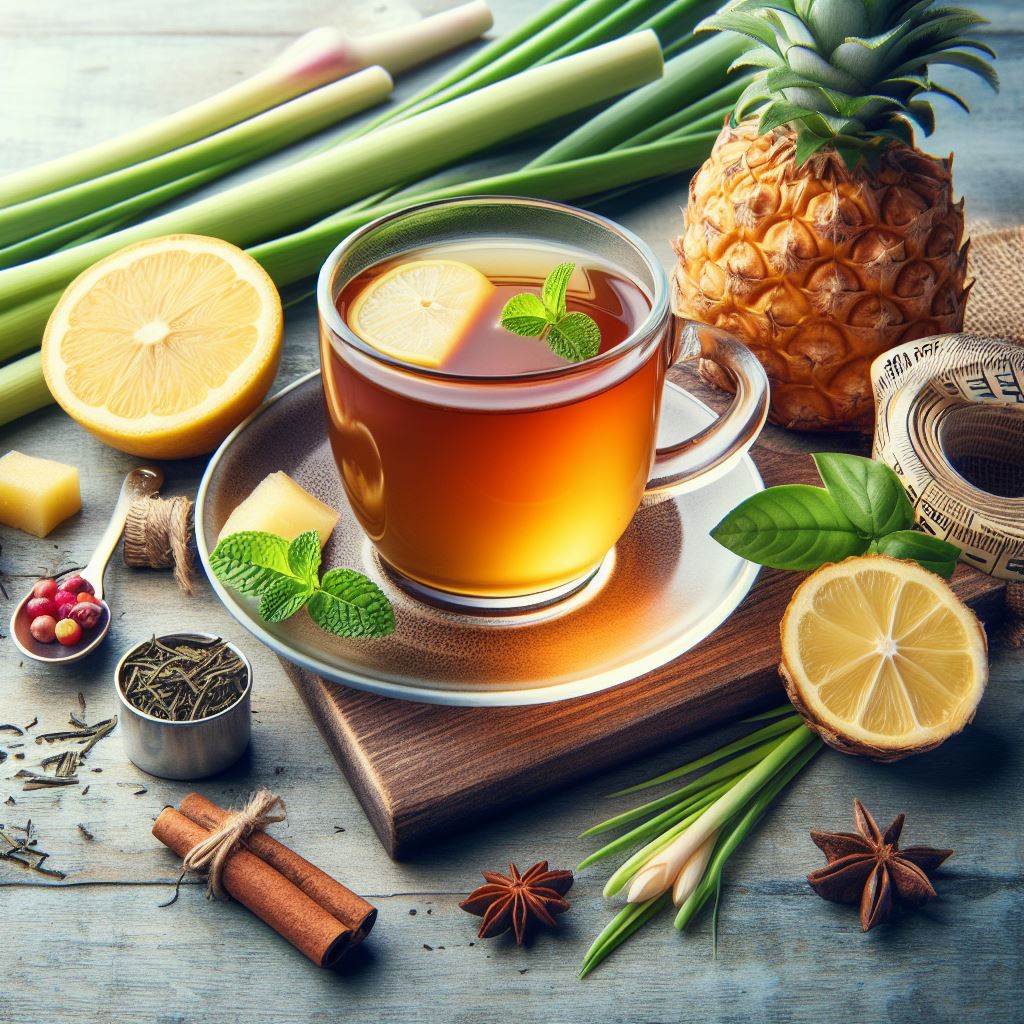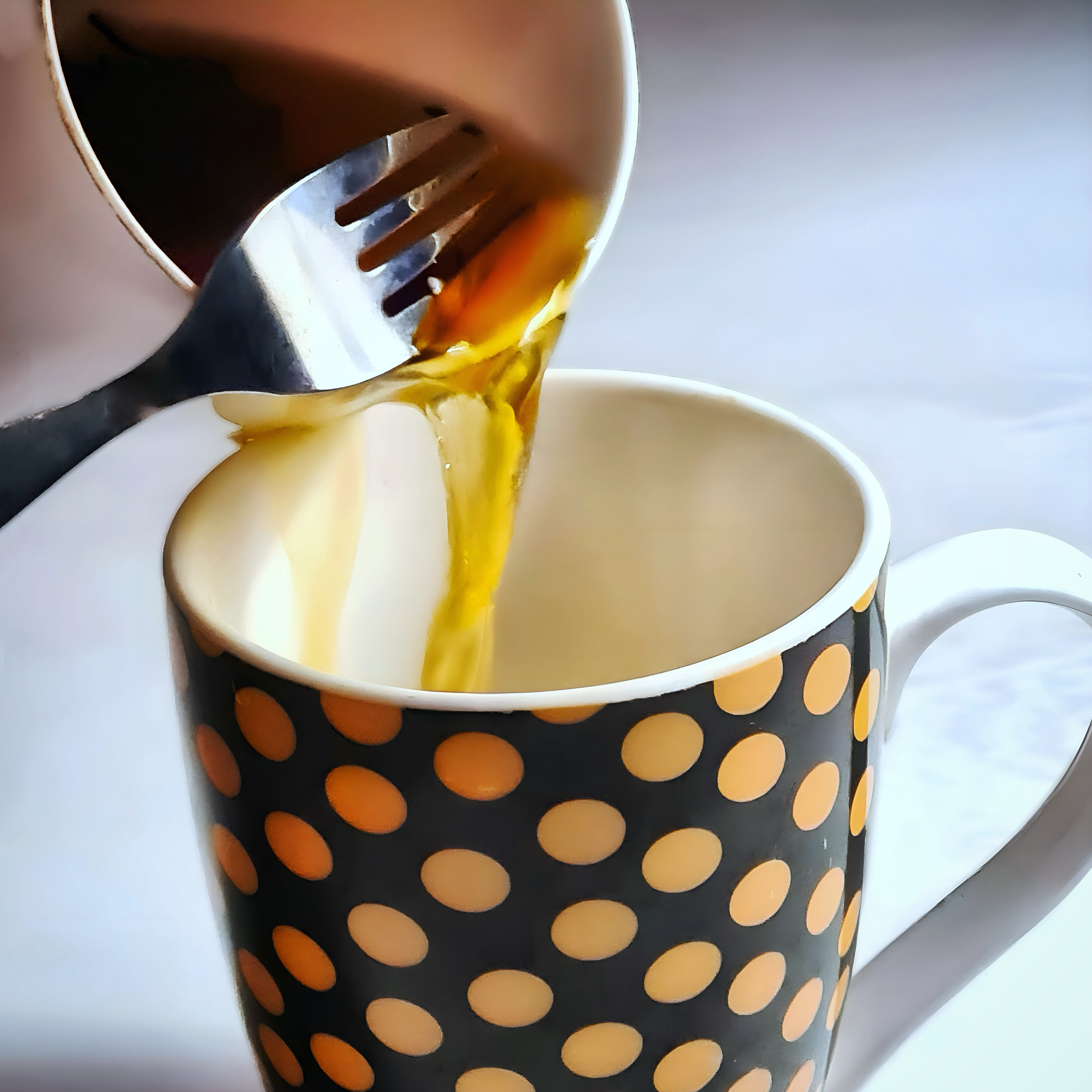Among the many types of tea, two have gained a lot of attention in recent years for their unique characteristics and health benefits: yerba mate and matcha. But what are the differences between these two teas, and which one should you choose? Keep reading and we will compare and contrast yerba mate vs matcha to give you a better understanding of these two amazing teas! Hopefully, you can then decide which one suits you best!

Contents:
- The origins and histories
- Production and Processing
- Flavor Profiles
- Caffeine Content
- Health Benefits
- Preparation and Serving
- Sustainability and Environmental Impact
Origins and History: Yerba Mate VS Matcha:
To begin with, we will to look into the origins of yerba mate vs matcha tea, since they both come from unique and interesting backgrounds. Whilst they are both very popular teas, personally, I’ve found that not many people know the origins and history. They both have very unique origins and histories which reflect their distinct cultural and geographical contexts. So lets start with yerba mate:

Yerba Mate: The South American Delicacy
Yerba mate, sometimes called Chimarrão, is a traditional drink from originating from South America. More specifically, you would likely find it throughout countries like Argentina, Brazil, Paraguay, and Uruguay. It is made from the dried leaves and stems of the yerba mate plant (Ilex paraguariensis), a holly-like shrub native to the subtropical regions of the continent. Because of this, yerba mate has been consumed by the indigenous peoples of South America for centuries, as a source of energy, nutrition, and medicine. Interestingly, It was also used as a currency at one point and used a symbol of friendship and hospitality!
Yerba mate was introduced to Europe by the Spanish colonizers in the 16th century, and it became a popular drink among the upper classes. Today, yerba mate is still widely consumed in South America, and it has also gained popularity in other parts of the world, such as North America, Europe, and Asia.
Matcha: The Warriors Brew
As for matcha, it is a finely ground powder made from specially grown and processed green tea leaves. It originated in Japan, where it has been an integral part of the culture and tradition for over a thousand years. Matcha tea was first brought to Japan from China by Zen Buddhist monks in the 12th century, who used it as a meditation aid and a health tonic. It was then later adopted by the samurai warriors and the nobility, who developed the elaborate and refined ritual of the Japanese tea ceremony, or chanoyu.
In fact, during my time training to be a barista, luckily I had the chance to speak an expert in the field of tea production. What surprised me most was the fact that matcha tea was supposedly used by the samurai warriors, particularly before going into battle. Apparently this was due to its ability to boost the warriors energy and moral from the naturally high caffeine content. Not only this, but matcha has also been associated with art, poetry, philosophy, and spirituality, and it became a symbol of elegance and harmony. Today, matcha is still revered in Japan, and it has also become a global phenomenon, thanks to its exquisite taste and health benefits.
Production and Processing: Yerba Mate VS Matcha
When it comes to the production and processing methods of yerba mate vs matcha, they differ greatly. In fact, the vast difference in their processing methods is what gives them the distinctive qualities and appearance. We will briefly cover the fundamentals here, however, you can learn more about processing and production in our article: Tea Processing: The Ultimate Journey from Plant to Cup.

Yerba Mate Tea Leaves
As for yerba mate, this tea starts its journey in plantations or forests, where the plants can reach up to a whopping 15 meters in height! Here is a quick overview of the processing methods.
- Leaves and stems harvested by hand or by machines, usually once or twice a year.
- Harvested material dried, either by direct exposure to the sun, or by indirect heat from wood or gas fires. The drying process can take from a few hours to a few days, depending on the weather and the desired flavor.
- Dried leaves and stems are chopped, crushed, and sifted, to obtain the final product, which consists of different fractions: leaves, stems, and dust. The proportion of these fractions determines the quality and flavor of the yerba mate.
- Yerba mate is aged for several months in warehouses, to enhance its aroma and taste.
Matcha Green Tea Powder
Matcha tea differs greatly since it is produced from a special variety of green tea, called tencha. This plant is grown under shade for about three to four weeks before harvesting. Ultimately, this reduces the exposure to sunlight, and increases the chlorophyll and amino acid content in the leaves. This step is important as it gives matcha its vibrant green color and sweet flavor that we all love! Here are the next steps:
- Leaves are hand-picked, steamed, dried, and de-stemmed, to obtain the tencha leaves, which are then stored in cold and dark conditions, to preserve their freshness and quality.
- The tencha leaves are then stone-ground into a fine powder, using traditional granite mills. The grinding process is slow and careful, to avoid overheating and oxidizing the matcha, which would affect its flavor and color.
- The matcha powder is then packed in airtight containers, and stored in refrigerators, to maintain its freshness and potency.
Flavor Profile: Yerba Mate VS Matcha:
If you have tried both yerba mate and matcha, you will notice that they have very different flavor profiles. The rich tastes you will find in these teas also depends on their variety, quality, and preparation. However, If you are still yet to try these teas, read below where we will discuss the flavor profiles in-depth:

The Complex Taste of Yerba Mate
Between the two teas, I would say that yerba mate has a more complex and varied flavor, ranging from earthy, smoky, to herbal, floral, and fruity. It is usually described as an acquired taste, as some people may find it bitter or strong at first, but it can also be very refreshing and satisfying once you get used to it. As mentioned before, the flavor can also vary depending on different factors. For example:
- The proportion of the yerba mate fractions
- The age and origin of the yerba mate
- The water temperature and quality
- The brewing time and method.
It is also quite common practice for people to add sugar, honey, lemon, mint, or other herbs and spices, to enhance or modify the flavor of yerba mate. As for me, I like to embrace its simplicity and keep the flavor as natural as possible!
The Delicate & Earthy Taste of Matcha
In contrast, I would say matcha has more of a unique and delicate flavor, characterized by its umami, sweetness, and slightly bitter undertones. Most people usually describe matcha as a refined and sophisticated taste. Whereas, some people may find it too subtle or bland at first. From my own experience, most people find the taste of matcha to be ‘grassy’. However, it can also be very enjoyable and addictive once you appreciate its nuances. Likewise, the flavor can also vary depending different factors, such as:
- The grade and quality of the matcha
- The water temperature and quality
- The whisking technique and intensity.
Some people like to add milk, sugar, or other sweeteners, to create different variations of matcha. For example: matcha lattes, matcha smoothies, or matcha ice cream are very popular these days.
Caffeine Content: Yerba Mate VS Matcha:
When people discuss both yerba mate and matcha, the first thing that comes up in conversation is usually the caffeine content. I would say the caffeine content of yerba mate vs match is a hot topic, since they are the two top teas with the highest caffeine content. So if you’re looking for a buzz to perk you up, these are the best choices. They both have differing caffeine content with different effects which we will discuss below. Find out more about the caffeine content of tea in our post on What Tea Has the Most Caffeine? The Answer Might Surprise You!

Yerba Mate: 80mg per cup
First, taking a look into yerba mate tea, you will find it has a high amount of caffeine, around 80mg per cup. However, this also depends on the type and quantity of the yerba mate, the water temperature and volume, and the brewing time and method.
On paper, yerba mate seems to have more caffeine per cup than matcha. An personally, I have found that it tends to give you a bigger kick of energy. This could likely be because it contains other compounds, such as theobromine and theophylline. These compounds have similar stimulant effects as caffeine. And what else is great about this tea, it can provide a sustained and balanced energy boost, without causing jitters, anxiety, or crashes. Some also find that yerba mate can enhance mental alertness, focus, and mood, and reduce fatigue and appetite.
Matcha: 70mg per cup
When it comes to matcha, you will notice it has a slightly lower amount of caffeine, which can often be about 70mg per cup. Likewise, this also depends on things like the grade and quality of the matcha, the water temperature and volume, and the whisking technique and intensity.
As mentioned before, yerba mate seems to give more of kick due to the higher caffeine per cup. Alternatively, matcha contains a high amount of L-theanine, an amino acid which has calming and relaxing effects on the brain. L-theanine can also counteract the negative effects of caffeine, such as nervousness, irritability, or insomnia. However, due to the L-theanine, you are more likely to get a smoother, more gentle energy boost without causing any side effects.
So, matcha is probably best for you if you are looking for a longer-lasting buzz. For some people, it can also improve cognitive function, memory, and concentration, and promote a state of zen-like calmness and awareness.
Health Benefits: Yerba Mate VS Matcha:
Much like other teas, there is an entire cocktail of health benefits to choose from. Especially when it comes to yerba mate vs matcha, as there are many to pick from. This is thanks to their rich content of antioxidants, vitamins, minerals, and other phytochemicals. See below for more information:

Yerba Mate for Weight Loss
The yerba mate tea is a powerhouse of antioxidants, meaning it can protect the cells from oxidative stress and inflammation. Ultimately, these are thought to prevent or reduce the risk of various chronic diseases, such as cancer, cardiovascular disease, diabetes, and neurodegenerative disorders.
Yerba mate also contains vitamins A, C, E, and B complex. Minerals such as calcium, magnesium, iron, zinc, and potassium, and other beneficial compounds, such as saponins, flavonoids, and chlorogenic acid.
Not only this, but yerba mate can support the immune system, the digestive system, the respiratory system, the nervous system, and the metabolic system. It is also a great option for weight management, as it can increase energy expenditure, fat oxidation, and satiety.
Matcha Tea for Old Age
Likewise, matcha is also a superfood of antioxidants, which can scavenge the free radicals and reduce the oxidative damage and inflammation in the body. Similarly to yerba mayte, this may help prevent or delay the onset of various age-related diseases. For example: cancerous illnesses, cardiovascular problems, diabetes, and potentially even Alzheimer’s disease.
Matcha also contains some alternative vitamins, such as C, K, and B complex. These are minerals such as calcium, magnesium, iron, zinc, and selenium, and other beneficial compounds, such as catechins, polyphenols, and chlorophyll.
According to studies, matcha can boost the immune system, the digestive system, the skin health, the liver health, and the dental health. It is also great with weight loss, by enhancing thermogenesis, fat burning, and glucose regulation.
Preparation and Serving: Yerba Mate VS Matcha:
Since both teas come from very traditional and cultural backgrounds, the methods of preparation and serving of yerba mate vs matcha vary. Both methods reveal their unique traditional and cultural practices. However, this is not mandatory when drinking these teas. Although, if you want to try and recreate their cultural identities, than we have some useful tips to follow below:


Yerba Mate: Wooden Cup & Straw
Traditionally, yerba mate is prepared and served in a gourd, or mate (yes, thats where the name comes from). This is a hollowed-out fruit or wood vessel, and a bombilla, which is a metal straw with a filter at the end. To get started, you should:
- Fill the vessel with about two-thirds of yerba mate.
- Then, tilt and shake it to create a hollow space on one side.
- The bombilla straw is inserted into the hollow space, and then hot water (not boiling) is poured over the yerba mate, filling the gourd.
- The yerba mate is then ready to drink, by sipping through the bombilla.
The water can be refilled several times, until the yerba mate loses its flavor. Aditionally, a common practice in South America is to share it among friends or family. Traditionally, you would pass the gourd from one person to another, while saying “gracias” or “obrigado” to thank the person who served the mate. This practice demonstrates why it is such a social and communal drink. You can see how it fosters a sense of connection and friendship among the drinkers!
Matcha: Bowl and Whisk
Matcha is quite different, and resembles the more well-known tea experience (with a few exceptions). Traditionally, it is prepared and served in a bowl, or ‘chawan’, with a bamboo whisk, or ‘chasen’. These are the steps to follow:
- The bowl is warmed and dried, and then a small amount of matcha powder (about one to two teaspoons) is sifted into the bowl, using a fine mesh strainer.
- Then, hot water (not boiling) is added to the bowl, using a bamboo ladle, or chashaku. The water should be enough to cover the matcha powder, and create a thick paste.
- The whisk is then used to whisk the matcha vigorously, in a zigzag or W-shaped motion, until a layer of fine bubbles forms on the surface.
- The matcha is then ready to drink, by sipping from the bowl.
It’s worth noting that the whisking process can be adjusted, depending on the desired consistency and texture of the matcha too. Additionally, it can be prepared as koicha, or thick tea, which is more concentrated and intense. Or alternatively, you could prepare it as usucha, or thin tea, which is more diluted and light. Matcha is usually served as part of the Japanese tea ceremony, which is a formal and ritualized practice. In certain parts of the world, particularly Japan, matcha is a very spiritual and aesthetic drink. It cultivates a sense of harmony and beauty among the participants!
Sustainability and Environmental Impact:
Despite all the fantastic qualities that both yerba mate and matcha bring, they both have some environmental implications. However, it’s not all doom and gloom, as measures are in place to encourage sustainability! The negative implications mainly depend on the production and consumption practices of yerba mate vs matcha:

Yerba Mate: Benefits Local Communities
The production of yerba mate does in fact have some negative impacts on the environment. Some of the main causes include:
- Deforestation
- Soil erosion
- Water pollution
- Biodiversity loss.
These impacts are mainly caused by the expansion of yerba mate plantations which is a big issue as demand increases. Because of these plantations, native forests and ecosystems are being replaced. Additionally, the use of agrochemicals, such as pesticides and fertilizers contaminate the soil and water resources.
However, yerba mate production also has some positive impacts, such as carbon sequestration, soil conservation, and social development. These impacts are mainly achieved by the adoption of sustainable and organic farming methods, such as agroforestry, shade-grown, and fair trade, which protect the environment and benefit the local communities.
Matcha: Reducing Carbon Footprint
As for the production of matcha, it has some positive impacts on the environment, such as carbon reduction, water conservation, and waste minimization. These impacts are mainly derived from the shade-growing technique, reducing the carbon footprint and water usage of the tea plants. Additionally, a stone-grinding process is also used which eliminates the need for packaging and transportation of the tea leaves.
However, matcha production also has some negative impacts to look out for, such as land degradation, energy consumption, and greenhouse gas emissions. These impacts are mainly caused by the intensive cultivation and processing of the tea plants, which require large amounts of land, energy, and resources, and the use of synthetic fertilizers and pesticides. All of which contribute to global warming and environmental pollution as the demand for this delicious tea increases!
Conclusion
Yerba mate vs matcha; which one will you choose? They are both amazing teas, and they both have their own advantages and disadvantages. Not just this, they both offer a unique and enjoyable experience. So the choice between yerba mate and matcha ultimately depends on your personal preferences, goals, and expectations.
You may prefer yerba mate if you are looking for a social and communal drink, with a complex and varied flavor, a moderate and balanced energy boost. Whereas, you may prefer matcha if you are looking for a spiritual and aesthetic drink, with a delicate and refined flavor, a smooth and gentle energy boost, and an interesting cultural significance!
Or you may like both, and enjoy them on different occasions, depending on your mood and situation. Whatever your choice, you can be sure that you are drinking a tea that is not only delicious, but also healthy, and meaningful!
Discover More Tea-Related Articles:
- Why Do Tea Bags Float? 5 Surprising Reasons
- How to Make Beetroot Tea: A Healthy Herbal Brew
- Salt in Tea: Everything You Need to Know about this Simple Trick
- Can You Drink Tea After Brushing Teeth? A Complete Oral Guide
- Tea for Constipation Relief: The Best Teas to Make You Poop
Sources:
- The History and Origins of Yerba Mate – Yerba Crew
- Matcha | Origins, Uses, Japanese Green Tea Type, & Health Benefits | Britannica
- 5 Science-Backed Health Benefits Of Matcha Tea – Forbes Health
- 7 Health Benefits of Yerba Mate (Backed by Science) (healthline.com)
- 7 Proven Health Benefits of Matcha Tea (healthline.com)





Leave a Comment